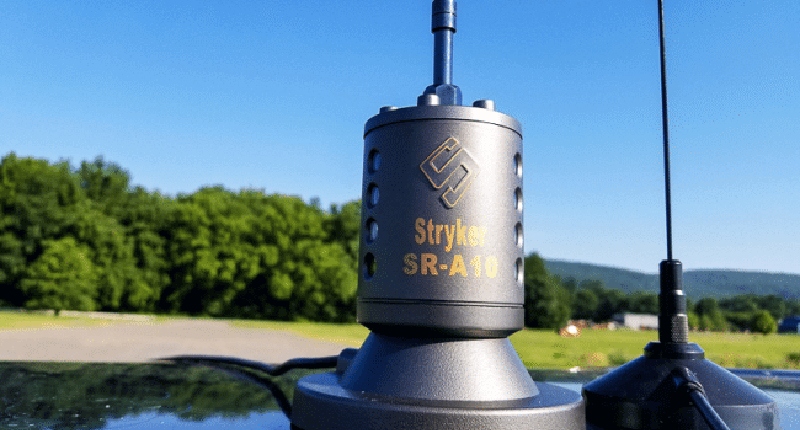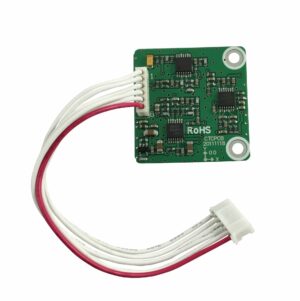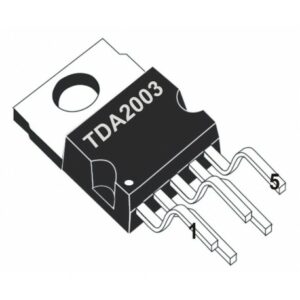While many beginners assume that the model of CB radio is the most critical part of their CB setup, the truth is that a high-performance CB antenna has a huge impact on the quality of your CB’s transmit and receive range. Since FCC regulations limit all CB radios to 4 watts of power, the antenna is the best way to maximize performance. A poorly performing CB antenna reduces the radio’s transmission range and quality, while a high-quality CB antenna kit can extend the signal’s reach.
Let’s take a look at the different types of CB radio antennas that are popular for pickup trucks, semi-trucks, and CB base stations – and learn some tips to help you choose the best CB antenna for your needs.
Types of CB Antennas
The type of antenna that’s ideal for your CB radio setup depends on the type of radio you have, how you plan to use it, and your location. Available options include fiberglass antennas, stainless steel CB antennas, magnetic mount antennas, whip antennas, mirror mount antennas, ground plane, magnetic base, and dual antennas. Since even the best CB radio won’t perform well without a good antenna, let’s look at the most common types of antennae for CB base stations and mobile CB use.
CB Base Station Antennas
CB base station antennas are designed for use at base stations which are stationary locations. Because of this, they can be larger, ranging from 3 to 18 feet in height. With proper SWR tuning, a CB base antenna may be able to communicate as far as 30 miles. However, it is important to check local regulations, as an 18-foot antenna may not be suitable for communities with strict HOA rules. It is worth noting that a CB base antenna can be used with any CB radio; operators can even convert a mobile radio to function as a base station by connecting it to a 12-volt power source.
Unlike mobile antennas, base station antennas do not require a large metallic ground plane, so there is more flexibility in where and how they are installed. Safety is paramount so it is important to avoid installation near power lines or hazardous tree limbs.
Here are three common categories of base station antennas.
Ground Plane CB Antennas
A ground plane CB antenna works by using the ground to help it transmit and receive signals. This design has a long central pole that points into the air and several short poles that lie on the ground around it. The short poles help to reflect and amplify the signals. Ground plane antennas are usually omnidirectional, meaning they receive and transmit signals around a full 360 degrees. This type of antenna is ideal for locations where the ground doesn’t conduct electricity very well.
Beam CB Antennas
A beam CB antenna (also known as a directional antenna) sends signals in a specific direction, instead of in all directions like other antennas. It has metal parts arranged in a particular pattern, often a “V” shape, that helps to focus the radio signals. This design makes it easier to talk to other CB radios in the chosen direction. Beam CB antennas also reduce noise from other signals coming in from all sides. Beam CB antennas are best used in fixed base station setups to reach specific CB operators across long distances.
Dipole CB Antennas
A dipole antenna is a type of CB base antenna that has two main wires or rods mounted horizontally. While dipole antennas are popular because the mount kit is relatively simple to set up, they’re not the best CB antenna option because they don’t transmit well over a long range.
Mobile CB Antennas
Mobile CB antennas can be used “on the go” in cars, pickup trucks, semi-trucks, boats, ATVs, or RVs. They are smaller and shorter than base station antennas and have various mount kit options for different vehicles.
Because the optimal antenna length is ¼ wavelength (which calculates to 102”), mobile antennas have a coil section that increases the overall length of the antenna wire while keeping the height low enough for vehicle use. The location of the coil in the antenna is called the “load position.” When deciding on the load position for your antenna, it’s important to know that the coil and two-thirds of the antenna must extend above the roof line of your vehicle.
Consider your specific vehicle, where you will mount the antenna, and whether you need a directional or omnidirectional antenna. You can choose from several types of antennas including top load antennas, whip antennas, magnetic mount antennas, and center load antennas. Remember – every CB antenna mount must be properly grounded for the antenna to function correctly.
Top Loaded CB Antennas
A top-loaded fiberglass CB antenna has its coil at the very top and offers the most efficient design in terms of the ratio of the power delivered to the antenna relative to the power radiated from the antenna. Fiberglass construction is used to support the top loaded coil. These antennas can be used for vehicles or in stationary settings. With the coil located higher on the antenna, it can be placed in several different mounting positions and still clear the body of the vehicle. However, it is top heavy which is harder to sustain in the wind. Top-loaded antennas have a lower watt capacity but because of their efficiency can easily handle the standard four-watt limit of CB radios.
Center Loaded Antennas
Center loaded antennas feature a coil placed in the center of the antenna. The mount has a lower shaft that’s covered in fiberglass, followed by the coil, and then the stainless steel whip. The design of the center load antenna results in excellent antenna efficiency. These are often referred to as “trucker antennas” because their ability to deliver premium signal strength makes them a favorite of truck drivers.
Base Loaded Antennas
Base loaded antennas are so named because the coil is in the base of the antenna. These antennas often have a heavier coil with a higher power handling capability than a center loaded or top loaded antenna. This design is often found in magnet mount antennas.
Mirror Mount Antenna
Mirror mount antennas are exactly what the name implies: they are mounted on the mirror arm of your vehicle instead of the roof. They’re durable and versatile and let you move the antenna to a different vehicle without drilling any holes. You can even convert them for use as a temporary base station antenna by attaching them to a ladder or pole. Mirror mount hardware is sold separately so you can choose the best antenna for your situation.
Whip CB Antenna
A whip CB antenna is long and thin, usually 3 to 8 feet in length; it’s made of stainless steel or aluminum and may be either base or center loaded with a coil to improve performance. Whip antennas are versatile and can be easily mounted either on the vehicle’s roof or fender; they can also be used with base station receivers if they’re installed on a tall mast. The long steel whip can be tied down when not in use to protect the antenna from damage.
Magnet Mount CB Antenna
A magnet mount CB antenna can be quickly attached to the roof of a vehicle because its heavy-duty magnet base holds the antenna securely in place. Because you don’t have to drill any holes to mount them, magnet mount antennas are easy to install and remove and can be repositioned as needed.
Telescoping CB Antenna
A telescoping CB antenna is commonly used with handheld CB radios (such as the Uniden walkie-talkie type) and other portable CB radios. These stainless steel antennas have telescoping sections that extend when needed and fold up short when not in use. A telescoping antenna is also a low-profile option for vehicle use.
Common Uses of CB Antennas
While many people associate mobile CB radios with semi-truck drivers, they have many more uses.
- In homes or offices as a base station antenna when mounted on a mast or tower for communication over a wider range.
- In emergency situations, handheld CB radios can be used as backup communication in areas without cell service or internet connections.
- For recreational purposes such as off-roading, boating, participating in contests, or communicating with fellow campers or travelers.
- With other amateur radios, such as 10-meter ham radios. Since amateur radios can transmit much further than CB radios, the antenna quality really matters.
Essentials to Consider When Purchasing a CB Antenna
CB radio systems are allowed to transmit in a frequency range between 26 MHz and 27 MHz on forty CB channels specified by the FCC (some models also include UHF and ham radio frequencies). The maximum power allowed for a CB radio is four watts, so the antenna is really important for maximizing the range and the quality of your reception. As you’re evaluating the CB antennas on the market, consider these important criteria.
Antenna Cost vs. Quality
Most buyers are looking for a quality antenna within a reasonable budget. CB antenna prices vary based on the type, length, and brand of the antenna. So, how much does a CB antenna cost?
The simplest CB antenna sells for $30 on Amazon, while base station CB antennas are over $200. Additional expenses include mounting hardware like PL-259 connectors and coaxial cables. To get the most for your money, remember that a cheap antenna is likely to have lousy results. Find a sweet spot that fits your budget and delivers great performance. The Stryker SR-A10 CB antenna retails for around $125 and is an example of a quality antenna that’s worth the price.
Mounting Location on Your Vehicle
Your vehicle’s roof, bumper, trunk, hood channel, or mirror bars are all good places to mount a CB antenna. Your choice will depend on your type of vehicle, model of radio, and preferred antenna. For optimal performance, the antenna should be mounted on the highest point possible, and the coil must be fixed above the roofline. Every antenna must also be fully grounded with a connector to the chassis of your vehicle. For vehicles that do not have a metal roof panel or offer enough space for grounding, no ground plane (NGP) antennas are the best option.
Antenna Mount Size
Mount size is another essential factor to consider. Your antenna mount is what determines how well your CB antenna attaches to your vehicle. Extra-long or heavy-duty antennas need a mount that can offer strong support to the antenna whip.
If you don’t want to drill a hole or permanently attach an antenna to your vehicle, a magnetic mount is an excellent choice.
CB Antenna Length
Does the length of a CB antenna matter? Yes, it does. Longer antennas typically perform best so it’s smart to install the longest antenna that your vehicle can accommodate. Choose a CB antenna kit with a mount that will support the length of your antenna and the right antenna configuration for your vehicle’s body style.
Antenna Tuning Design
Even the best CB antennas still need to be tuned to achieve maximum performance. Antenna tuning capabilities include tunable tips and set screws. As you’re comparing antennas, consider how the model is tuned and the level of skill required. The Standing Wave Ratio or SWR reading needs to be under 1.5 to efficiently transmit and receive the CB signal. For more information, check out our guide on how to tune your CB radio.
Antenna Coil Placement
CB antennas vary in performance based on the location of the coil on the antenna itself. Remember that the coil is used to achieve the right ratio between the total antenna length and wavelength. Since it’s often necessary to shorten the height of the antenna, pay attention to where the coil is placed. The most popular type is center loaded for its combination of performance and durability.
Antenna Materials
Materials matter when it comes to signal transmission and durability. Look for CB antennas made of high-quality materials such as stainless steel and fiberglass with durable coatings that can withstand harsh weather conditions. Stryker antennas use a coil wound with 6 gauge solid copper wire that is 100% plated in pure silver which makes the coil highly conductive.
Coax Cables
Think of coax as the middleman – it connects the CB with the antenna, so make sure that your antenna is connected to your CB with a high-quality coaxial cable. Since it’s part of the antenna system, a good cable will help maximize the range of your CB radio unit.
Dual Antenna Options
A dual antenna CB system uses two antennas instead of one to improve the signal strength and range of the CB radio. These systems are often used in mobile CB applications, particularly on large vehicles, to reduce signal fading. They require special installation and setup work to operate effectively.
Who Makes the Best CB Antennas?
If you’re looking for best-in-class CB antennas, 10-meter radios, connectors, and accessories, Stryker Radio’s quality beats Wilson, Cobra, Firestik, Hustler, Midland, and Procomm products. Our comprehensive warranty and strong customer service make us a top choice among both professional and amateur operators who expect the best from their radios.
Stryker SR-A10 Center Load CB Antenna and SR-A10 Magnet Mount CB Antenna
Our top-rated, best-selling SR-A10 CB Antenna is the perfect choice for beginners and professionals alike who value quality and professionalism. The A10 is a true trucker CB antenna that features a highly efficient air-wound coil for exceptional performance. The coil is made from 6 gauge solid copper wire plated in pure silver for maximum conductivity.
The SR-A10s magnet mount stainless steel whip design provides the same construction as the SR-A10 design with a magnetic mount kit. This antenna is a great choice for people looking for a high-quality solution that doesn’t permanently modify the vehicle.
Stryker SR-2K
Our SR-2K Center Loaded CB Antenna is a high-performance antenna with 3600 watts of power and a 49-inch tapered stainless steel whip. It features a low-loss coil, is weather channel ready, and has a high-performance thermoplastic coating for extreme durability.
When shopping for a CB radio, antenna, or accessories, choose features that will get the results you want and don’t compromise on quality. Stryker CB antennas are sold online and in retail stores nationwide. Check out our Locations page to find one in a CB shop near you.



